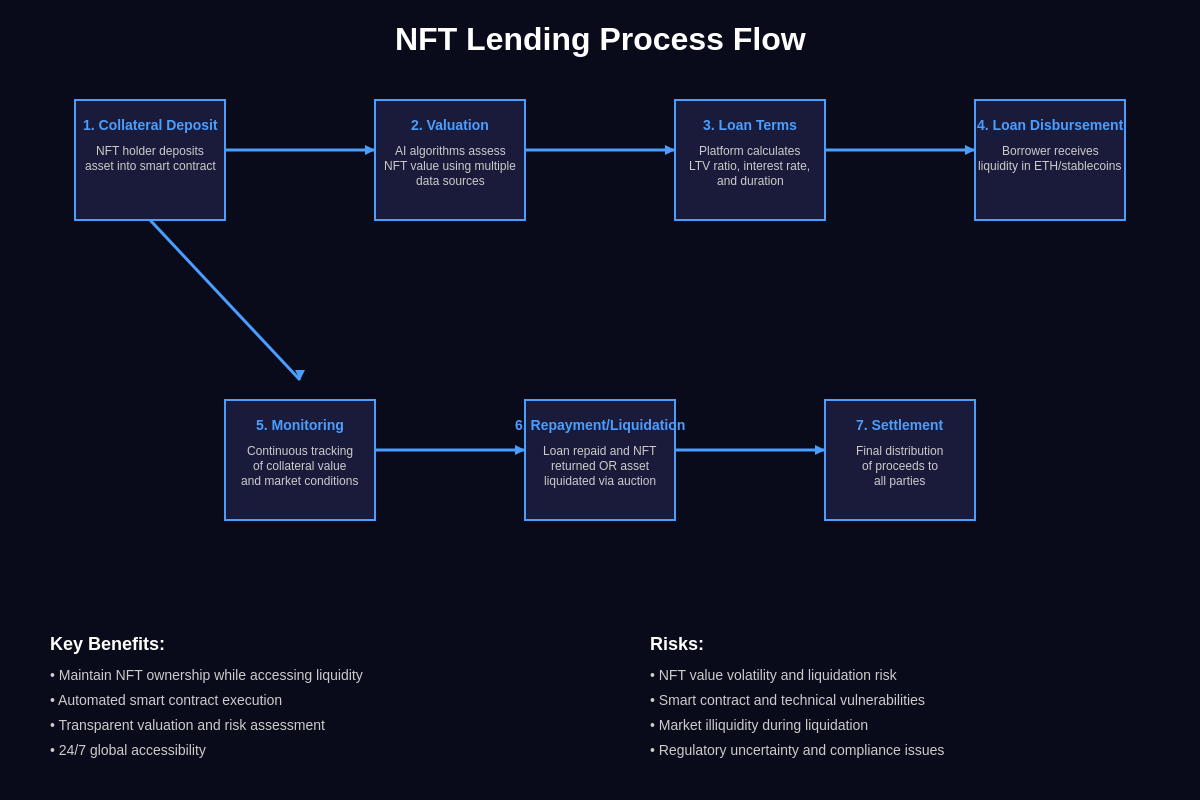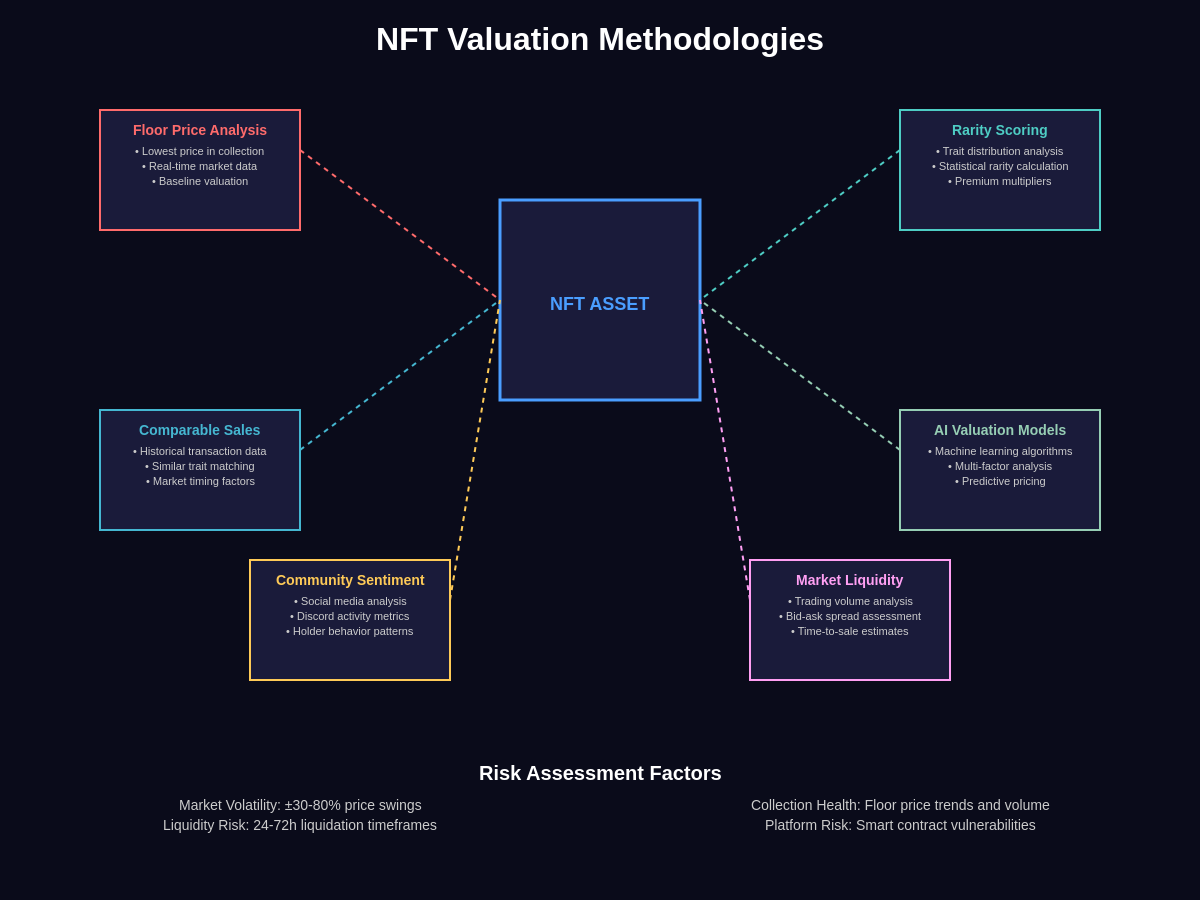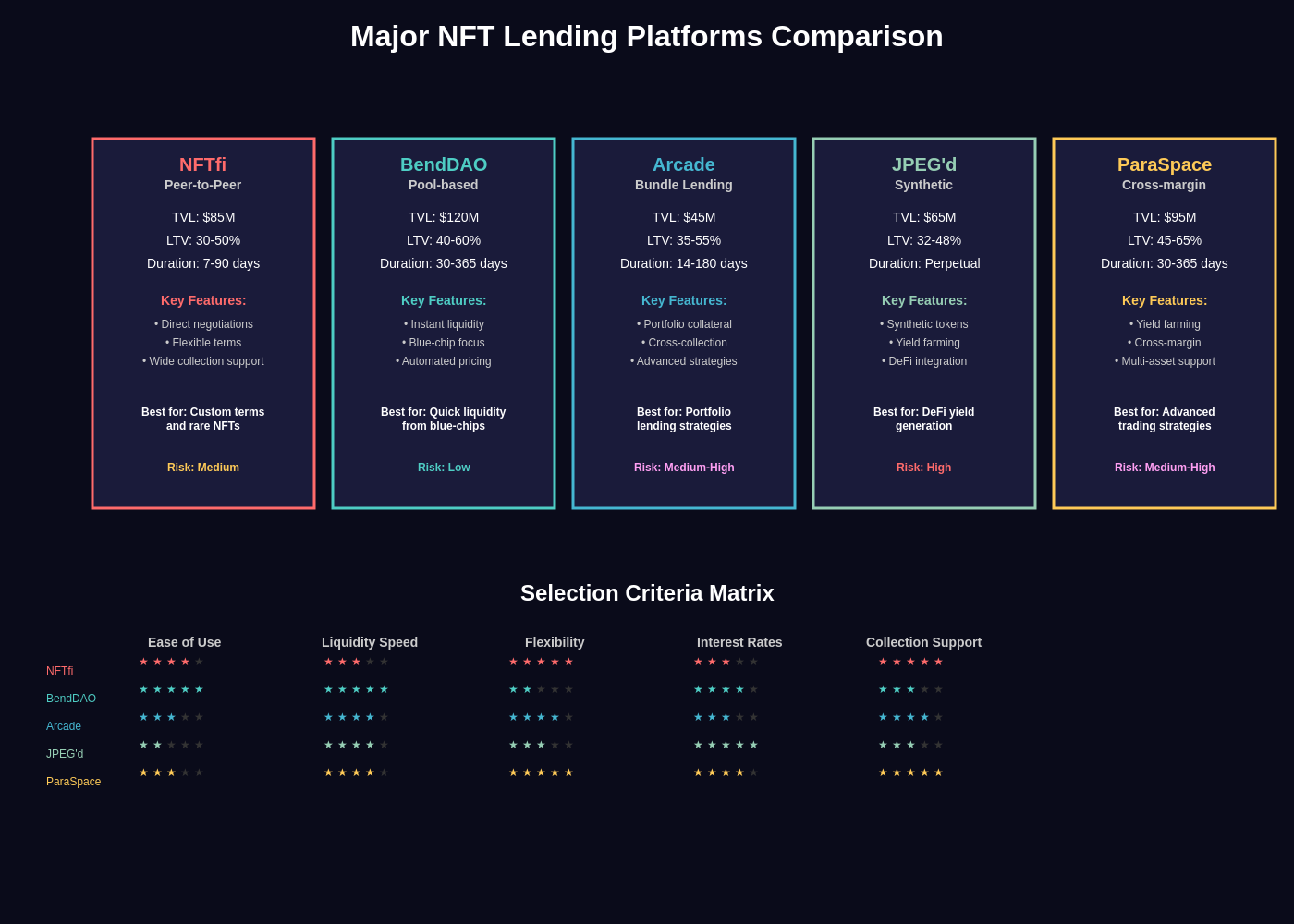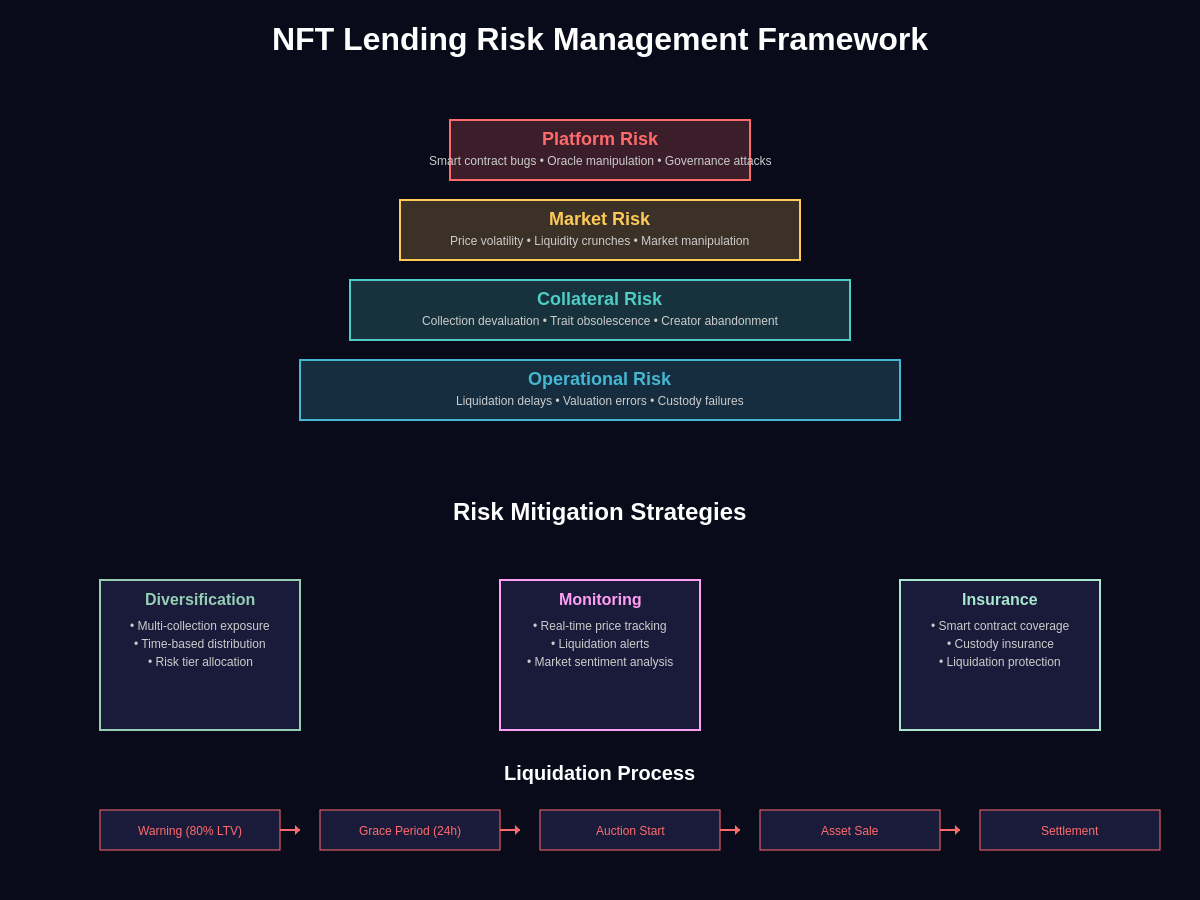The Revolutionary Intersection of Art and Finance
Non-fungible token lending protocols represent one of the most innovative applications of decentralized finance, enabling holders of valuable digital art and collectibles to unlock liquidity without permanently selling their prized assets. These sophisticated platforms have emerged as a crucial bridge between the burgeoning NFT market and traditional financial services, creating new opportunities for both collectors and investors while establishing entirely new asset classes for collateralized lending. The concept of using digital art as collateral has transformed from a speculative experiment into a mature financial ecosystem that processes hundreds of millions of dollars in loans annually.
Advanced trading strategies and NFT market analysis continue to evolve as institutional investors recognize the potential of NFT-backed lending protocols. The sophisticated valuation mechanisms employed by these platforms represent a significant advancement in digital asset assessment, incorporating real-time market data, historical sales information, and community sentiment analysis to provide accurate collateral valuations that protect both lenders and borrowers.
The emergence of NFT lending protocols has fundamentally altered the relationship between ownership and liquidity in the digital art space, allowing collectors to maintain ownership of their valuable assets while accessing capital for other investments, personal needs, or portfolio diversification strategies. This paradigm shift has created new economic models that were previously impossible in traditional art markets, where physical custody and authentication posed significant barriers to efficient lending arrangements.
Historical Development and Market Evolution
The evolution of NFT lending protocols began in early 2021 as the NFT market experienced explosive growth, with collectors accumulating valuable digital assets but lacking mechanisms to access liquidity without selling their holdings. Early pioneers in the space recognized the fundamental problem of illiquid wealth tied up in digital collectibles and began developing sophisticated protocols that could assess NFT values and facilitate secure lending arrangements through smart contracts and decentralized governance mechanisms.
Initial NFT lending solutions were relatively primitive, often requiring manual appraisals and centralized oversight that contradicted the decentralized ethos of the broader NFT ecosystem. However, rapid innovation in valuation algorithms, oracle integration, and automated liquidation mechanisms quickly transformed these early experiments into sophisticated financial instruments capable of handling complex lending scenarios with minimal human intervention.
The maturation of NFT marketplaces provided crucial infrastructure for lending protocols, as comprehensive transaction data became available to inform valuation models and liquidation processes. Platforms like OpenSea, LooksRare, and X2Y2 created standardized frameworks for NFT trading that lending protocols could leverage to assess fair market values and execute liquidation procedures when necessary.
The integration of advanced price analysis tools and market indicators has enabled NFT lending protocols to develop increasingly sophisticated risk management systems that can account for market volatility, collection popularity trends, and broader macroeconomic factors that influence digital asset values.
Market adoption of NFT lending protocols has been driven by several key factors including the desire of collectors to maintain long-term exposure to appreciating assets while accessing short-term liquidity, the emergence of professional NFT trading strategies that require capital efficiency, and the development of institutional-grade custody solutions that provide security guarantees for high-value digital assets.
Core Mechanics and Protocol Architecture
NFT lending protocols operate through sophisticated smart contract systems that automate the entire lending process from collateral evaluation to loan origination and potential liquidation procedures. These systems typically employ multi-layered architecture that includes valuation oracles, risk assessment algorithms, and automated market makers that collectively ensure fair and efficient lending operations while minimizing counterparty risk for all participants.

The collateralization process begins when borrowers deposit NFTs into protocol smart contracts, which immediately assess the assets using combination of on-chain data, marketplace history, and algorithmic valuation models. Advanced protocols employ multiple valuation methodologies including floor price analysis, comparable sales evaluation, rarity scoring, and community sentiment indicators to establish loan-to-value ratios that protect lenders while providing meaningful liquidity to borrowers.
Loan terms in NFT lending protocols are typically determined through combination of algorithmic assessment and market dynamics, with interest rates, loan durations, and liquidation thresholds automatically calculated based on asset volatility, collection performance, and overall market conditions. Many protocols implement dynamic pricing models that adjust terms in real-time based on supply and demand factors, ensuring that lending rates remain competitive while maintaining appropriate risk levels for the platform.
Smart contract automation handles the entire lifecycle of NFT-backed loans, from initial collateral deposit through ongoing monitoring of asset values and automated liquidation procedures when necessary. This automation eliminates the need for traditional banking infrastructure while providing transparency and security that exceeds many conventional lending arrangements.
The liquidation mechanisms employed by NFT lending protocols represent some of the most sophisticated elements of these systems, typically involving multi-step processes that attempt to maximize recovery for borrowers while protecting lender interests. Advanced protocols implement grace periods, partial liquidation options, and community governance mechanisms that can intervene in liquidation processes when appropriate.
Valuation Methodologies and Risk Assessment
The accurate valuation of NFTs for lending purposes represents one of the most challenging aspects of NFT lending protocols, requiring sophisticated algorithms that can account for the unique characteristics of digital art and collectibles while providing reliable estimates that protect both lenders and borrowers. These systems typically employ multiple valuation approaches that combine quantitative analysis with qualitative factors to produce comprehensive risk assessments.

Floor price analysis serves as the foundation for most NFT valuation systems, providing baseline values based on the lowest-priced items available in specific collections. However, advanced protocols recognize that floor prices can be manipulated and may not accurately reflect the value of rare or historically significant pieces, leading to the development of more nuanced valuation methodologies that consider individual asset characteristics.
Rarity scoring has become a crucial component of NFT valuation, with sophisticated algorithms analyzing trait distributions, historical significance, and community recognition to assign rarity values that more accurately reflect market demand for specific pieces. These systems often incorporate machine learning models that can identify patterns in collector behavior and predict future value trends based on historical data and market dynamics.
Comparable sales analysis represents another important valuation methodology, with protocols maintaining comprehensive databases of historical transactions that can inform current valuations. Advanced systems weight recent sales more heavily while accounting for market conditions, buyer profiles, and transaction circumstances to provide more accurate comparable value estimates.
The integration of comprehensive market data and technical analysis tools enables NFT lending protocols to incorporate broader market trends and macroeconomic factors into their valuation models, providing more robust risk assessment that accounts for correlation between NFT values and broader cryptocurrency market conditions.
Community sentiment analysis has emerged as an innovative approach to NFT valuation, with protocols monitoring social media activity, Discord discussions, and other community indicators to gauge collector enthusiasm and potential future demand for specific collections or individual pieces.
Major Platforms and Protocol Comparison
The NFT lending landscape features several prominent platforms that have developed distinct approaches to collateralized lending, each offering unique features and serving different segments of the market. These platforms range from fully decentralized protocols governed by token holders to hybrid models that combine automated systems with human oversight for high-value transactions.

NFTfi represents one of the pioneers in peer-to-peer NFT lending, facilitating direct negotiations between borrowers and lenders while providing smart contract infrastructure to ensure secure transactions. The platform allows for flexible loan terms and supports a wide range of NFT collections, though it requires active participation from both parties to establish lending arrangements.
BendDAO emerged as a significant player in the pool-based lending space, allowing NFT holders to borrow against blue-chip collections through automated protocols that provide instant liquidity at standardized terms. The platform’s approach eliminates the need for individual negotiations while providing competitive rates for popular collections with strong liquidity profiles.
Arcade focuses on bundle lending and more complex NFT financial products, enabling borrowers to use multiple assets as collateral while providing lenders with diversified exposure to various NFT collections. The platform’s approach addresses some of the concentration risk associated with single-asset lending while providing more flexible borrowing options for collectors with diverse portfolios.
JPEG’d takes a different approach by enabling borrowers to mint synthetic tokens backed by their NFT collateral, creating additional liquidity mechanisms and enabling more complex financial strategies. This approach provides borrowers with ongoing access to their capital while maintaining upside exposure to their collateral assets.
ParaSpace has developed one of the most comprehensive NFT lending platforms, supporting cross-margin lending, yield farming with NFT collateral, and integration with broader DeFi ecosystems. The platform’s sophisticated approach enables advanced trading strategies and portfolio management techniques that were previously impossible in NFT markets.
Risk Management and Liquidation Processes
Risk management in NFT lending protocols requires sophisticated systems that can account for the unique volatility and illiquidity characteristics of digital art and collectibles while providing adequate protection for lenders and fair treatment for borrowers. These systems typically employ multi-layered approaches that combine real-time monitoring, predictive analytics, and graduated response mechanisms to maintain healthy loan portfolios.

Loan-to-value ratio management represents the primary risk control mechanism for most NFT lending protocols, with sophisticated algorithms continuously monitoring collateral values and adjusting lending parameters based on market conditions. Advanced platforms implement dynamic LTV ratios that can respond to changing market conditions while providing borrowers with maximum access to liquidity during stable periods.
The liquidation process in NFT lending protocols typically involves multiple stages designed to provide borrowers with opportunities to add collateral, repay loans, or negotiate alternative arrangements before assets are sold. Many platforms implement warning systems that notify borrowers when their positions approach liquidation thresholds, providing time to take corrective action.
Auction mechanisms for liquidated NFTs have evolved significantly, with modern protocols implementing sophisticated bidding systems that attempt to maximize recovery values while ensuring timely asset disposition. Some platforms offer borrowers the right of first refusal on liquidation sales, enabling them to repurchase their assets at auction prices when possible.
The integration of insurance mechanisms has become increasingly important for NFT lending protocols, with some platforms offering coverage for technical failures, smart contract exploits, and other systemic risks that could affect borrower and lender interests. These insurance products help build confidence in NFT lending while providing additional security for participants.
Community governance plays an increasingly important role in risk management decisions, with many protocols allowing token holders to vote on liquidation procedures, risk parameters, and other critical operational decisions. This decentralized approach helps ensure that protocol policies reflect community interests while maintaining necessary safeguards for financial stability.
Integration with DeFi Ecosystems
The integration of NFT lending protocols with broader decentralized finance ecosystems has created new opportunities for capital efficiency and yield generation that extend far beyond simple collateralized lending arrangements. These integrations enable NFT holders to participate in complex financial strategies while maintaining exposure to their digital art investments, creating synergies between different segments of the cryptocurrency economy.
Yield farming opportunities have emerged through integrations that allow NFT collateral to generate additional returns while securing loans, with some protocols enabling borrowers to stake their borrowed funds in high-yield DeFi protocols while their NFTs serve as collateral. This approach maximizes capital efficiency and can potentially generate returns that exceed borrowing costs, creating profitable strategies for sophisticated users.
Cross-protocol composability has enabled NFT lending platforms to integrate with automated market makers, derivatives platforms, and other DeFi primitives to create complex financial products that were previously impossible. These integrations allow for hedging strategies, leveraged positions, and other advanced techniques that professional traders require for sophisticated portfolio management.
The development of NFT-backed synthetic assets has created new possibilities for liquidity provision and price discovery, with some protocols enabling the creation of fungible tokens that represent fractional ownership in NFT collections. These synthetic assets can be traded on conventional exchanges and integrated with existing DeFi infrastructure in ways that whole NFTs cannot.
Cross-chain compatibility has become increasingly important as NFT collections expand beyond Ethereum to other blockchain networks, with advanced lending protocols developing bridge technologies and multi-chain support that enable users to access liquidity regardless of where their assets are located. This cross-chain functionality is crucial for maximizing the addressable market for NFT lending services.
Regulatory Landscape and Compliance Considerations
The regulatory environment surrounding NFT lending protocols remains complex and evolving, with different jurisdictions taking varying approaches to the classification and oversight of digital art lending activities. These regulatory considerations have significant implications for protocol design, user experience, and long-term viability of NFT lending platforms as they seek to operate within existing financial regulatory frameworks.
Securities law implications represent one of the most significant regulatory challenges for NFT lending protocols, as regulators in various jurisdictions consider whether certain NFT lending arrangements constitute securities offerings that require registration and compliance with traditional financial regulations. The outcome of these regulatory determinations will significantly impact how NFT lending protocols can operate and what services they can offer to users.
Anti-money laundering and know-your-customer requirements pose operational challenges for decentralized NFT lending protocols that aim to provide permissionless access to lending services. Many platforms have implemented identity verification systems and transaction monitoring capabilities to comply with AML requirements while attempting to maintain user privacy and decentralized operation.
Tax implications of NFT lending activities vary significantly across jurisdictions, with complex rules governing the treatment of collateralized lending, liquidation events, and yield generation activities. Users of NFT lending protocols must navigate these tax considerations while platforms work to provide necessary reporting information and documentation to support user compliance obligations.
Consumer protection regulations may apply to NFT lending activities in some jurisdictions, requiring platforms to provide specific disclosures, implement cooling-off periods, and maintain certain operational standards to protect users from predatory lending practices. These requirements can significantly impact platform design and user experience while potentially providing important safeguards for participants.
The emergence of specialized regulatory frameworks for digital assets in some jurisdictions provides clearer guidance for NFT lending protocols while creating compliance obligations that platforms must address. These developing regulatory structures will likely shape the future evolution of NFT lending services and their integration with traditional financial systems.
Economic Impact and Market Dynamics
The economic impact of NFT lending protocols extends far beyond the direct participants in lending arrangements, influencing NFT market dynamics, collector behavior, and the broader relationship between digital art and financial markets. These protocols have created new mechanisms for price discovery, liquidity provision, and risk management that are reshaping how participants interact with NFT markets.
Liquidity injection through NFT lending protocols has significant effects on market dynamics, enabling collectors to access capital without selling assets while potentially reducing selling pressure during market downturns. This liquidity provision can help stabilize NFT prices while enabling more sophisticated trading and investment strategies that require access to capital.
The development of institutional participation in NFT markets has been facilitated by lending protocols that provide professional-grade risk management and custody solutions. These platforms enable traditional financial institutions to participate in NFT lending while maintaining compliance with fiduciary obligations and risk management requirements.
Market efficiency improvements result from the price discovery mechanisms embedded in NFT lending protocols, as continuous valuation processes and liquidation activities provide ongoing market feedback that helps establish fair values for digital art and collectibles. This price discovery process benefits all market participants by providing more accurate information about asset values.
The creation of new business models around NFT lending has generated employment opportunities, technological innovation, and entrepreneurial activity that extends the economic impact of these protocols beyond direct participants. The development of supporting services including valuation analytics, risk assessment tools, and portfolio management platforms creates additional economic value within the NFT ecosystem.
Future Innovations and Technological Developments
The future evolution of NFT lending protocols will likely incorporate advanced technologies including artificial intelligence, machine learning, and sophisticated financial modeling techniques that will further improve valuation accuracy and risk management capabilities. These technological developments will enable more precise assessment of NFT values while reducing operational costs and improving user experiences.
Artificial intelligence integration will enhance valuation algorithms by incorporating image recognition, sentiment analysis, and predictive modeling capabilities that can assess NFT characteristics and market trends with greater accuracy than current systems. These AI-powered systems will be particularly valuable for evaluating unique or rare pieces that lack sufficient comparable sales data for traditional valuation approaches.
Cross-metaverse compatibility represents an important frontier for NFT lending protocols as virtual worlds and gaming platforms increasingly integrate NFT assets that may serve as collateral for lending arrangements. The development of standardized valuation and custody mechanisms for metaverse assets will expand the addressable market for NFT lending while creating new categories of digital collateral.
Advanced charting and analysis capabilities will become increasingly important for NFT lending protocols as they develop more sophisticated risk management and valuation systems that can incorporate technical analysis principles adapted for digital art markets.
The integration of fractional ownership mechanisms with NFT lending protocols will enable new forms of collateralized lending where multiple parties can share ownership of high-value assets while accessing proportional lending capacity. These developments will democratize access to high-value NFT investments while creating new opportunities for portfolio diversification.
Automated portfolio management systems will emerge to help NFT collectors optimize their lending strategies, automatically adjusting collateral positions, refinancing loans, and managing liquidation risks based on market conditions and user-defined parameters. These systems will make sophisticated NFT lending strategies accessible to retail users while improving capital efficiency for professional collectors.
Challenges and Limitations
Despite significant innovations, NFT lending protocols face several fundamental challenges that limit their current effectiveness and adoption. Market volatility remains a primary concern, as rapid changes in NFT values can quickly push loans into liquidation territory, creating losses for borrowers and potential recovery issues for lenders. The inherent volatility of digital art markets makes risk assessment and pricing particularly challenging compared to traditional asset classes.
Liquidity constraints represent another significant limitation, as many NFT collections lack sufficient trading volume to support efficient liquidation processes when loans default. This illiquidity can result in significant discounts during forced sales, creating losses for borrowers while potentially exposing lenders to recovery shortfalls that impact platform sustainability.
Valuation accuracy remains an ongoing challenge, as the subjective nature of art appreciation makes it difficult to develop algorithmic systems that can consistently assess NFT values with the precision required for lending decisions. The lack of standardized valuation methodologies across the industry creates inconsistencies that can disadvantage both borrowers and lenders.
Technical risks including smart contract vulnerabilities, oracle manipulation, and platform failures pose ongoing threats to NFT lending protocols and their users. These technical challenges require constant vigilance and sophisticated security measures that add operational complexity and costs to platform operations.
Regulatory uncertainty creates planning difficulties for NFT lending protocols as they attempt to build sustainable business models while remaining compliant with evolving legal requirements. The lack of clear regulatory guidance in many jurisdictions makes it difficult for platforms to make long-term strategic decisions or attract institutional capital.
User Experience and Accessibility
The user experience of NFT lending protocols has evolved significantly as platforms recognize the importance of accessibility and ease of use for mainstream adoption. Modern platforms emphasize intuitive interfaces that abstract away much of the technical complexity while providing advanced users with access to sophisticated features and customization options that enable professional-grade lending strategies.
Onboarding processes have been streamlined to minimize friction for new users while maintaining necessary security and compliance measures. Many platforms now offer guided tutorials, risk assessment tools, and educational resources that help users understand the implications of NFT lending activities and make informed decisions about their participation.
Mobile accessibility has become increasingly important as NFT lending platforms recognize that many users prefer to manage their digital asset portfolios through mobile applications. The development of responsive web interfaces and dedicated mobile apps has improved accessibility while enabling users to monitor their positions and respond to market changes from anywhere.
Integration with popular NFT wallets and portfolio management tools has simplified the process of connecting assets to lending platforms while maintaining security and user control over their digital assets. These integrations reduce technical barriers while providing seamless experiences that encourage regular platform usage.
Customer support systems have evolved to address the unique challenges of NFT lending, with many platforms offering specialized assistance for valuation disputes, technical issues, and educational support that helps users navigate the complexities of collateralized lending with digital assets.
Global Adoption and Cultural Impact
The global adoption of NFT lending protocols has varied significantly across different regions and cultural contexts, with some markets embracing these innovative financial products while others remain skeptical about the long-term viability of digital art as collateral. These cultural differences influence platform design, marketing strategies, and regulatory approaches as the industry seeks to expand internationally.
Cultural attitudes toward digital ownership and virtual assets play a significant role in adoption patterns, with younger demographics and technology-forward communities generally showing greater acceptance of NFT lending concepts. Educational initiatives and community outreach programs have proven important for building understanding and trust in markets where digital asset concepts are less familiar.
The integration of NFT lending protocols with traditional art markets has created interesting cultural dynamics as digital and physical art communities interact in new ways. Some traditional art institutions have begun exploring NFT lending as a way to bridge digital and physical art worlds while expanding their service offerings to younger collectors.
International regulatory cooperation will become increasingly important as NFT lending protocols seek to operate across borders while maintaining compliance with diverse legal requirements. The development of international standards and cooperative regulatory frameworks will facilitate global expansion while protecting consumers and maintaining financial stability.
Investment and Institutional Adoption
Institutional adoption of NFT lending protocols has accelerated as professional investors recognize the potential for generating returns through digital art lending while diversifying their portfolios beyond traditional asset classes. Hedge funds, family offices, and other sophisticated investors have begun integrating NFT lending strategies into their broader investment approaches, bringing additional capital and legitimacy to the space.
Venture capital investment in NFT lending protocols has supported rapid innovation and platform development while attracting experienced operators from traditional finance to the digital art lending space. This investment activity has accelerated technological development while providing resources for regulatory compliance and international expansion efforts.
The development of institutional-grade custody solutions and risk management systems has been crucial for attracting professional investors who require sophisticated safeguards and reporting capabilities. These developments have helped bridge the gap between traditional finance and NFT markets while establishing industry standards for institutional participation.
Partnerships between NFT lending protocols and traditional financial institutions have created hybrid models that combine the innovation of decentralized protocols with the stability and regulatory compliance of established financial services. These partnerships will likely accelerate mainstream adoption while providing new distribution channels for NFT lending services.
Disclaimer: This article is for informational purposes only and does not constitute financial advice. NFT lending involves substantial risks including total loss of collateral. The regulatory status of NFT lending protocols varies by jurisdiction and may change. Always conduct thorough research and consider your risk tolerance before participating in NFT lending activities. Past performance does not guarantee future results.